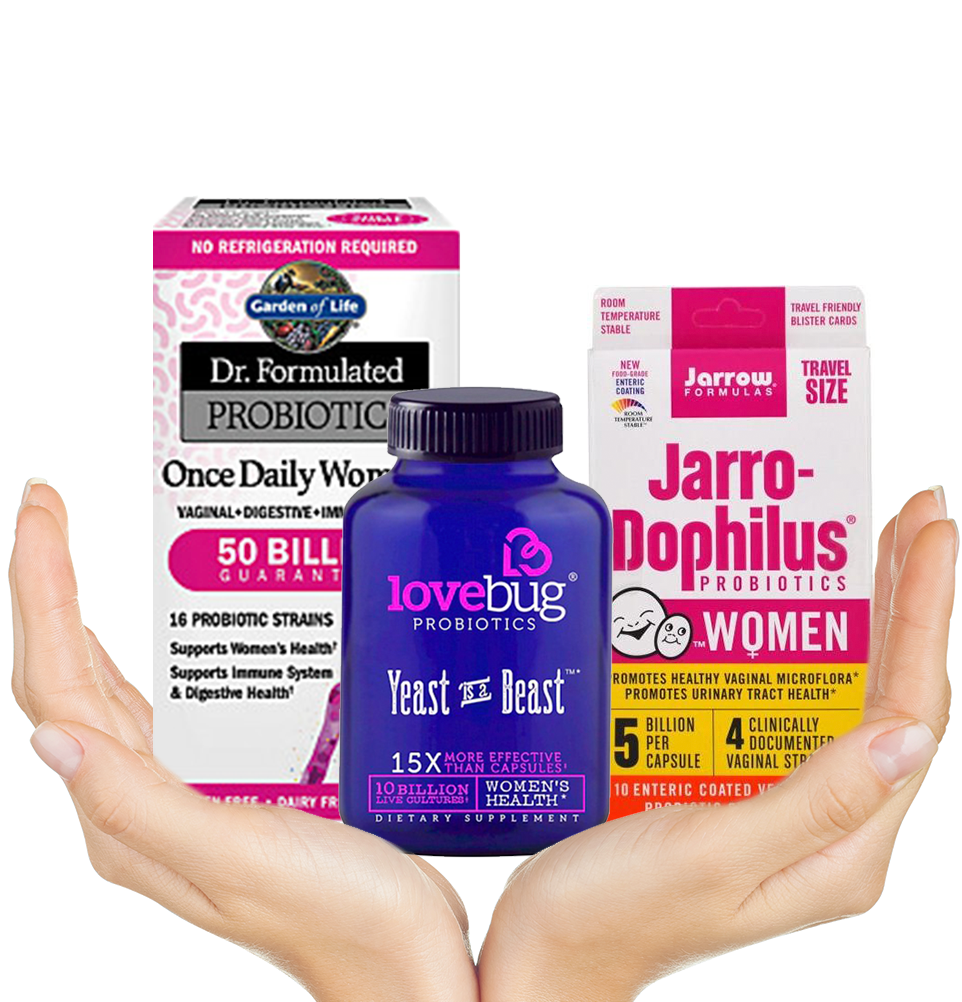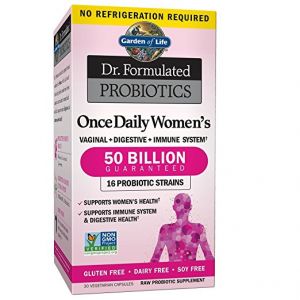Probiotics for Women with Yeast Infections were ranked by the total number of viable microbes contained in each dose and whether it matched what the product packaging claimed (viable microbes are usually measured in colony-forming units or CFUs, the number of bacterial colonies that grow from the dose when cultured in ideal conditions). We looked at whether the strains have science to support their use for yeast infections.
The top three brands for oral probiotics they investigated were:


Dr. Formulated Probiotics Once Daily Women's 50 Billion CFU, from Garden of Life
This supplement contains multiple strains of bacteria, including L. fermentum and L. reuteri, with a minimum of 50 billion viable CFUs. It’s webpage states that it was specifically formulated for women’s health by a board-certified neurologist and expert in the human microbiome:

Yeast is a Beast, from LoveBug Probiotics
This supplement contains strains of lactobacilli that adjust the acidity of the vagina to a healthier pH. It also contains cranberry extract to help manage urinary tract infections. Their webpage states that the product was formulated specifically by women, and contains 10 billion CFUs per dose.
[1] Pericolini E, Gabrielli E, Ballet N, et al. Therapeutic activity of a Saccharomyces cerevisiae-based probiotic and inactivated whole yeast on vaginal candidiasis. Virulence. 2017;8(1):74-90.
[2] Cribby S, Taylor M, Reid G. Vaginal microbiota and the use of probiotics. Interdisciplinary perspectives on infectious diseases. 2008;2008:256490.
[3] Goncalves B, Ferreira C, Alves CT, Henriques M, Azeredo J, Silva S. Vulvovaginal candidiasis: Epidemiology, microbiology and risk factors. Critical reviews in microbiology. 2016;42(6):905-927.
[4] Amital H, Gilburd B, Shoenfeld Y. Intelligent nutrition: health-promoting mechanisms of probiotics. The Israel Medical Association journal : IMAJ. 2003;5(11):812-813..
[5] Reid G, Beuerman D, Heinemann C, Bruce AW. Probiotic Lactobacillus dose required to restore and maintain a normal vaginal flora. FEMS immunology and medical microbiology. 2001;32(1):37-41.
[6] Morelli L, Zonenenschain D, Del Piano M, Cognein P. Utilization of the intestinal tract as a delivery system for urogenital probiotics. Journal of clinical gastroenterology. 2004;38(6 Suppl):S107-110.
[7]. Kim JM, Park YJ. Probiotics in the Prevention and Treatment of Postmenopausal Vaginal Infections: Review Article. Journal of menopausal medicine. 2017;23(3):139-145.
[8] Pendharkar S, Brandsborg E, Hammarstrom L, Marcotte H, Larsson PG. Vaginal colonisation by probiotic lactobacilli and clinical outcome in women conventionally treated for bacterial vaginosis and yeast infection. BMC infectious diseases. 2015;15:255.
-
Vegan Probiotics
By Dr. KarenMarch 8, 2022 -
Probiotics for Yeast Infections
By Dr. KarenOctober 19, 2021 -
Probiotics for Constipation
By Dr. KarenMarch 8, 2022 -
Best Time to Take Probiotics
By Dr. KarenMarch 8, 2022
Search the blog
Article Categories
- All Articles (95)
- Rating Charts (1)
- Beauty & Skincare (17)
- FAQ (0)
- Hair Care (9)
- Health & Wellness (12)
- Anti-Aging (4)
- Kid's Health (0)
- Makeup (2)
- Men's Health (2)
- Oral Care (3)
- Sunscreen (7)
- Skin Tools & Treatments (10)
- Supplements (26)
- Videos (0)













